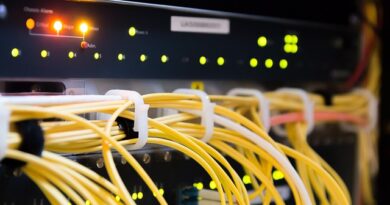The Role of an Electrical Safety Audit in Risk Management
Building a Safer Environment: The Role of an Electrical Safety Audit in Risk Management.
Introduction
In today’s world, risk management is a crucial aspect of maintaining a safe and secure environment, whether it’s in your home or business. When it comes to electrical safety, an electrical safety audit plays a significant role in risk management. This blog post will explore the importance of an electrical safety audit in building a safer environment and how it contributes to effective risk management practices.
Understanding Risk Management
Risk management involves identifying potential risks, assessing their likelihood and impact, and taking appropriate measures to mitigate or eliminate those risks. It is a proactive approach that aims to prevent accidents, protect individuals, and safeguard assets. In this context, electrical safety audits provide valuable insights into the potential risks associated with your electrical system and help you implement effective risk management strategies.
The Role of an Electrical Safety Audit
Identifying Electrical Hazards
An electrical safety audit involves a thorough examination of your electrical system to identify potential hazards. These hazards can include faulty wiring, overloaded circuits, outdated equipment, inadequate grounding, or improper installations. By identifying these hazards, you can assess the associated risks and take proactive steps to address them, thereby minimizing the potential for accidents, electrical fires, or injuries.
Assessing Risk Probability and Severity
During an electrical safety audit, auditors assess the probability and severity of identified risks. By evaluating the condition of your electrical system, the auditors can determine the likelihood of specific hazards occurring and the potential impact they may have on the safety of your environment. This risk assessment provides valuable information for prioritizing risk management efforts and allocating resources effectively.
Compliance with Safety Standards
Electrical safety audits also ensure compliance with safety standards and regulations. Adhering to these standards is not only a legal requirement but also an essential part of effective risk management. Compliance demonstrates your commitment to maintaining a safe environment and reduces the likelihood of accidents or legal liabilities associated with non-compliance.
Recommendations for Risk Mitigation
One of the key outcomes of an electrical safety audit is the provision of recommendations for risk mitigation. The auditors will identify specific actions and measures that can be implemented to reduce or eliminate the identified risks. These recommendations may include repairs, upgrades, maintenance procedures, or training programs aimed at enhancing electrical safety and minimizing potential hazards.
Enhancing Overall Safety Culture
Conducting regular electrical safety audits fosters a culture of safety within your home or business. By prioritizing electrical safety, you send a clear message to occupants, employees, and stakeholders that their well-being is of utmost importance. This emphasis on safety creates awareness, encourages responsible behavior, and promotes a safe working or living environment.
Conclusion
An electrical safety audit is an essential component of effective risk management practices. By identifying electrical hazards, assessing risk probability and severity, ensuring compliance with safety standards, providing recommendations for risk mitigation, and enhancing overall safety culture, an electrical safety audit contributes significantly to building a safer environment. Make electrical safety audits a regular part of your risk management strategy and take proactive steps to protect yourself, your loved ones, and your valuable assets.




